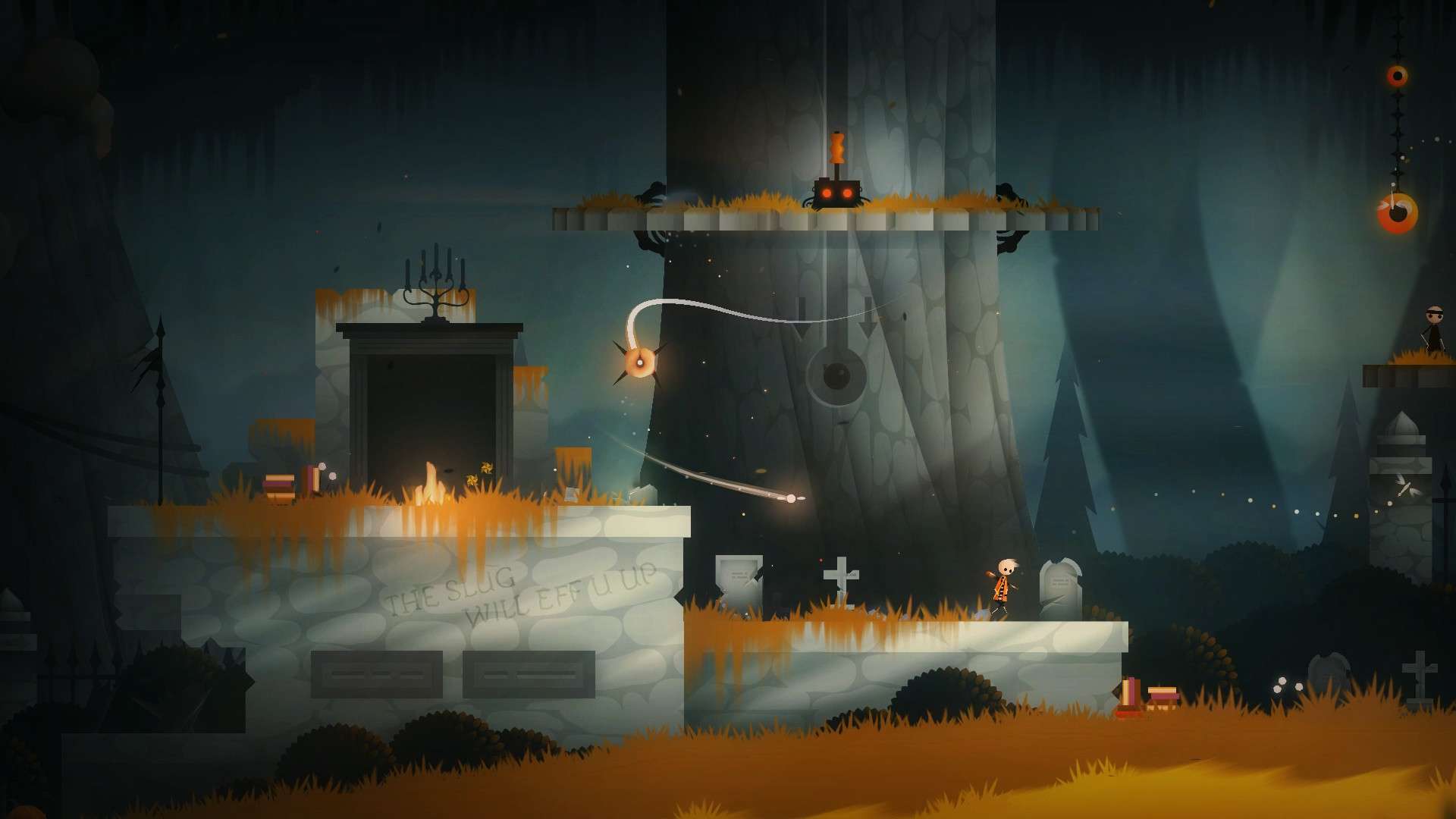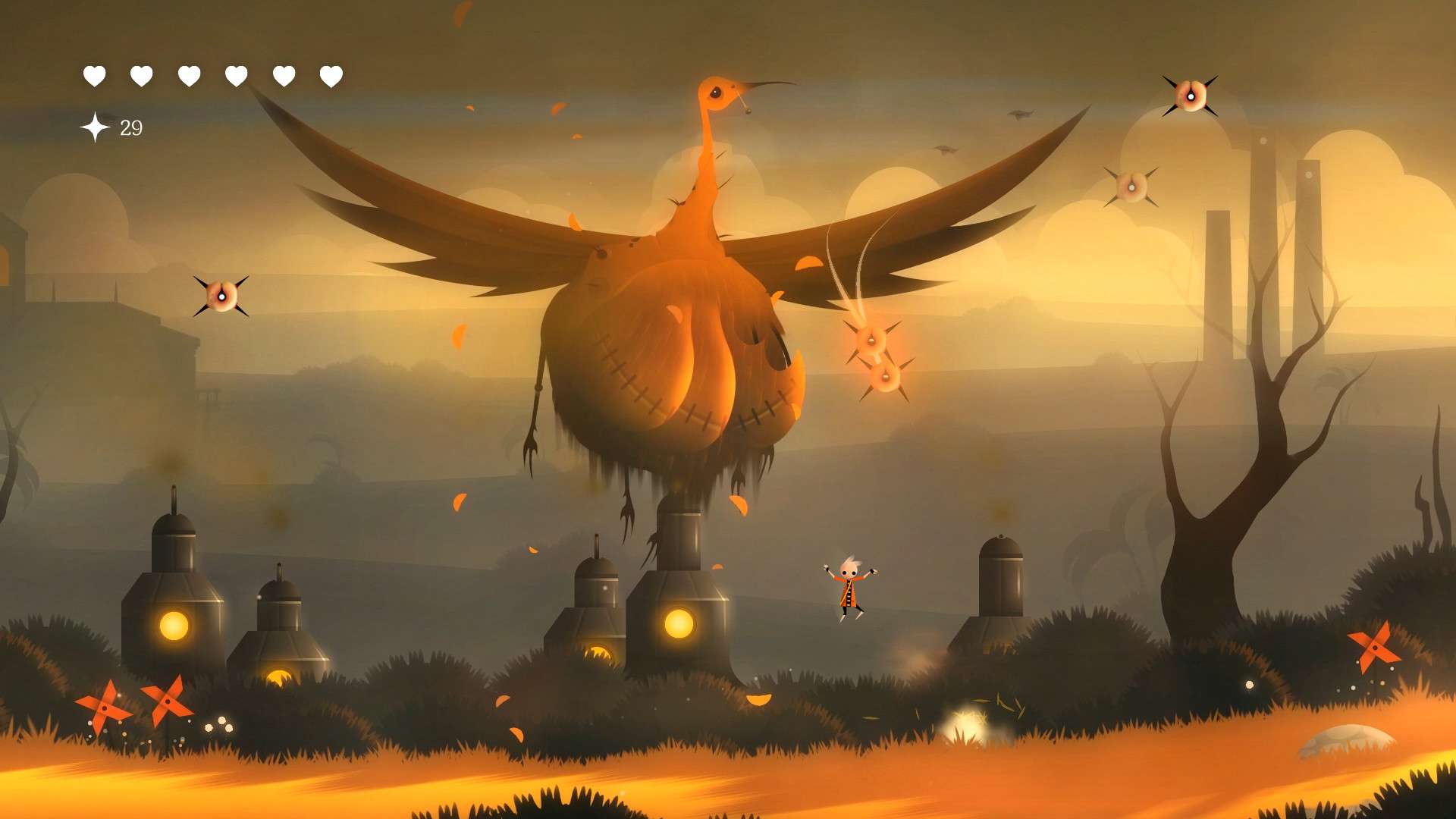
Neversong PC Review
Neversong (originally Kickstarted as ‘Once Upon a Coma‘) is a horror-ish 2D action platformer and the spiritual successor/reboot/remake of the popular flash game ominously titled ‘Coma‘, now very nearly ten years old. Coma has received a lot of praise and seriously high ratings for what is only a fifteen minute game, likely due to the dark and confusing world it’s set in. It manages to ask so many questions, intriguing the player by doing very little and it’s exciting to want to know more, to understand who the characters are or what the world is. And then it just ends. It just closes the door without explaining all of that, which is kind of wonderful. Clearly the oppressive theme and twisted nature of the micro-world that Thomas Brush built resonated with a lot of people but, sadly, I don’t think Neversong does it justice.
Firstly, it’s a much longer experience with a more complex story that I think actually worked against it. The boundless freedom of modern game development seems to have tangled up the original vision, resulting in, yes, asking more questions, being even more outlandish, but then also trying to tie a bunch of awkward answers together at the end. The whole experience seems to be tugging the player in different directions, it wants to have combat, it wants puzzles, it wants horror, but it never quite manages to fit them together in a meaningful way. It was still generally fun to play through, it’s just that it feels disjointed. For example, how can the knife-wielding maniacs be scary when you can bash them in with a baseball bat and literally kick their heads around once they go down? Why are the genuinely unnerving encounters with Doctor Smile crescendoed into a same-old combat-based end fight that uses naught to shake the player’s expectations or even attempt to unsettle them? The theme and the interaction the players have are unfortunately totally misaligned and the action that is there in its place is rendered effortless by the combat and puzzles being made far too easy.

There are still some great parts of Neversong, however. The sound design really stood out, for one. All of the music is spot on and the deeply haunting shrieks of the bosses as you take them down a notch made my heart beat hard against my chest every time, with both excitement and fear. The recurring close calls with Doctor Smile are awesomely disturbing, especially when he starts to appear more frequently, in the dialog of the scattered children, on whom he is obviously preying, and at some point menacingly floating in the background in a section of the world that is usually open and carefree. The unexpected and sudden juxtaposition of the lush, grassy area and this insane floating thing was probably my favourite moment in the whole game and I wish it had nailed at least a couple more of them in a similar fashion before the credits rolled.
I also really enjoyed uncovering new songs – having to rush back to the start to play them, in order to unlock powers and granting access to new areas. Although, I believe the meaning of the central piano was rather underutilised. I just think more could have been done with that recurrence, such as pieces of memories returning or the house becoming a little more contorted each time, perhaps becoming the asylum itself by the end. Instead, there was no real development of the history of Pete; the protagonist, and Wren; the girl he’s trying to save, or their shared love of the piano besides the opening and ending scenes. The discovered tunes are nice and the whole thing makes sense thematically, being about a coma where one could imagine familiar sounds getting through, but without context it really didn’t hit like it should have when it mattered. Even with the other musically-focused sections, such as the aforementioned ungodly boss screams that fling music notes and the pretty poor execution of basic rhyme scheme poetry (like bad nursery rhymes) to tell bits of the story, there was still no real connection to the main two and their relationship.

The ending of the game is pretty much the epitome of this particular issue, too. Without the character building or anything for us to gauge their connection on besides being ‘the thing the player is chasing’, the final section; which was clearly designed to be a big shock, falls flat. In reality it comes off, once again, as awkward and frustrating. There can’t be a big reveal or an interesting mystery if the only story sections are two information dumps, one at the beginning and the other at the end, that re-contextualise everything. There are parts of Neversong that hit the right notes, if you will, but they are too few and far between for the unique visuals and music to carry one’s enjoyment, and patience, through to the end.
